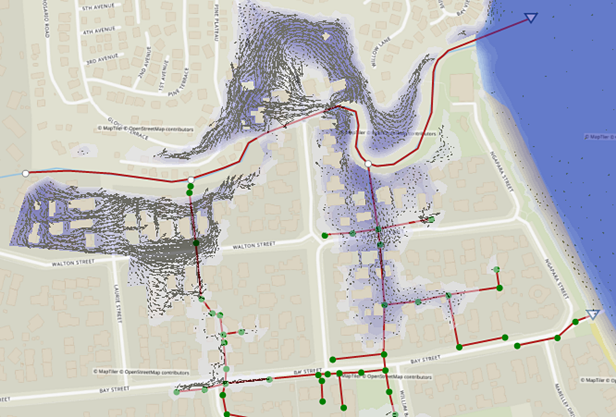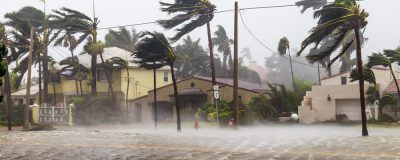It’s no surprise that urban water systems are considered more vulnerable than ever.
Between an increase in climate change-induced rainfall runoff to more sewage from growing populations, infrastructure developed in the 19th and 20th centuries simply cannot keep up. Cities face increased pressure to upgrade and operate these systems to meet the needs of future societies and our environment.
However, this is no easy task. Municipalities strained by limited funding and staffing resources are left wondering, ‘Where do I start?’
Take on a more holistic perspective
To reorientate urban areas towards sustainability, municipalities and utilities should take a step back to consider the different aspects of their urban water systems and the relationships between them. This is where integrated urban water management (IUWM) comes in. By adopting an IUWM approach, you focus on ensuring individual enhancement projects are planned and managed in an interlinked, holistic fashion to minimise negative impacts and maximise efficiency.
Embrace technology as your guiding light
To help bridge the gap between strategy and execution, tools and technology are key. Today, there are tools that score high on both decision support capabilities and user-friendliness to help water managers make IUWM a reality. Leveraging the latest technological advancements, these integrated water management tools are designed to accelerate implementation processes, predict the effects of interventions and foster better collaboration along the way.
Let’s take a closer look at some best-fit solutions based on specific IUWM initiatives:
1. If you want to manage all your city-related water systems in a single environment, an integrated water modelling platform like MIKE+, is ideal. It enables you to incorporate your entire pipe network, including both water and sewage, into one model for easy results visualisation. Plus, surface flow and flooding can be assessed by linking pipe models to integrated 2D engines. When combined, these features help pinpoint which specific areas in your city to focus on first.

Visualise water depth and flow direction in an integrated sewer network-overland surface flood model using MIKE+. © DHI
2. If your key target is reducing inflow & infiltration (I&I), a decision support platform, like Future City Flow, which collates SCADA, GIS and weather data into an online model, supports the proactive management of I&I challenges. Through real-time simulation, it guides users on how to optimise their system – such as by minimising sewer overflows, reducing flooding and achieving a stable inflow to the treatment plant. Stakeholders can also test and identify cost-efficient measures to achieve targets within budgets and timelines using the built-in scenario-based model planning tool.

Conduct target-based performance evaluations to reveal which areas of your city to focus improvement efforts on with Future City Flow. © DHI
3. For a closer look at the effects of storm water runoff on urban development in a particular area, consider Impervious Surface Mapping. With prices starting at just 75 EUR/sq km, this satellite-based solution provides spatially explicit information about the amount, location and type of impervious surfaces to support hydrological modelling and urban planning at a low cost.

Analyse spatially explicit information about the imperviousness level as well as the amount, extent, location and type of impervious surfaces with this highly automated impervious surface solution. © DHI
4. If leakage reduction is a priority, a non-revenue water solution like Leakage Monitor, supports Active Leakage Control and Non-Revenue Water management. By keeping leaks to a low, economically justifiable level, supply is optimised and liability and insurance costs reduced. Plus, you’re always kept in the know with automated reporting of leakage data and key performance indicators that trigger alerts when action is required.

Easily access the long-term history of leakage and view NRW results through a web-based interface with Leakage Monitor. © DHI
5. Lastly, to improve wastewater treatment efficiency and reduce costs, apply a digital twin, like TwinPlant, to your wastewater treatment operations. Users can run concurrent simulations, test complex control strategies and conduct advanced experiments given TwinPlant’s combined use of sensor data and model output. With automated reporting capabilities for environmental and process monitoring, power consumption and chemical usage, adjustments can be made immediately to achieve maximum efficiency.

TwinPlant allows users to better manage variable conditions such as influent flowrate and load as well as weather conditions to continuously produce required effluent quality. © DHI
Get the most value with the right support
When investing in tools to implement IUWM successfully, we know you’ll want to get the best support. If you’re considering using our software in-house, rest assured you and your staff will be supported by extensive training resources. Expert modellers are also available for consulting projects, to provide extended user support, or for model and project reviews.
Next steps: Watch the on-demand webinar and download our eBook!
For a deeper dive into this topic, watch the on-demand webinar, ‘Integrated urban water management: from modelling to operational excellence.’








